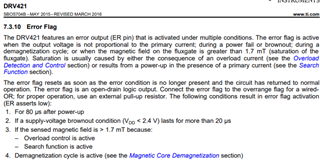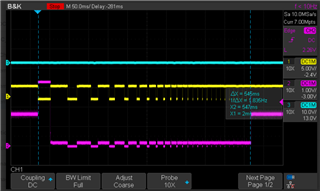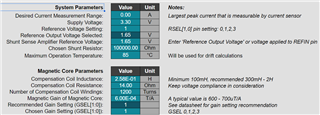Hello All
- We are working with DRV421. Looking to the user manual, ER asserts low when having a demagnetization cycle.

- We have performed some measurement monitoring OR and ER pin. In the below scope screenshot, in yellow is OR pin which is changing during demagnetization.

>> But when looking to ER pin it is always set to high.
[Question]
Is the statement in the user manual of DRV421 (ER asserts low during demagnetization) is applicable always when doing demagnetization ?
(Or it is a possibility but does not happen all the time and can explain what we measured)
In advance thank you for any support,







